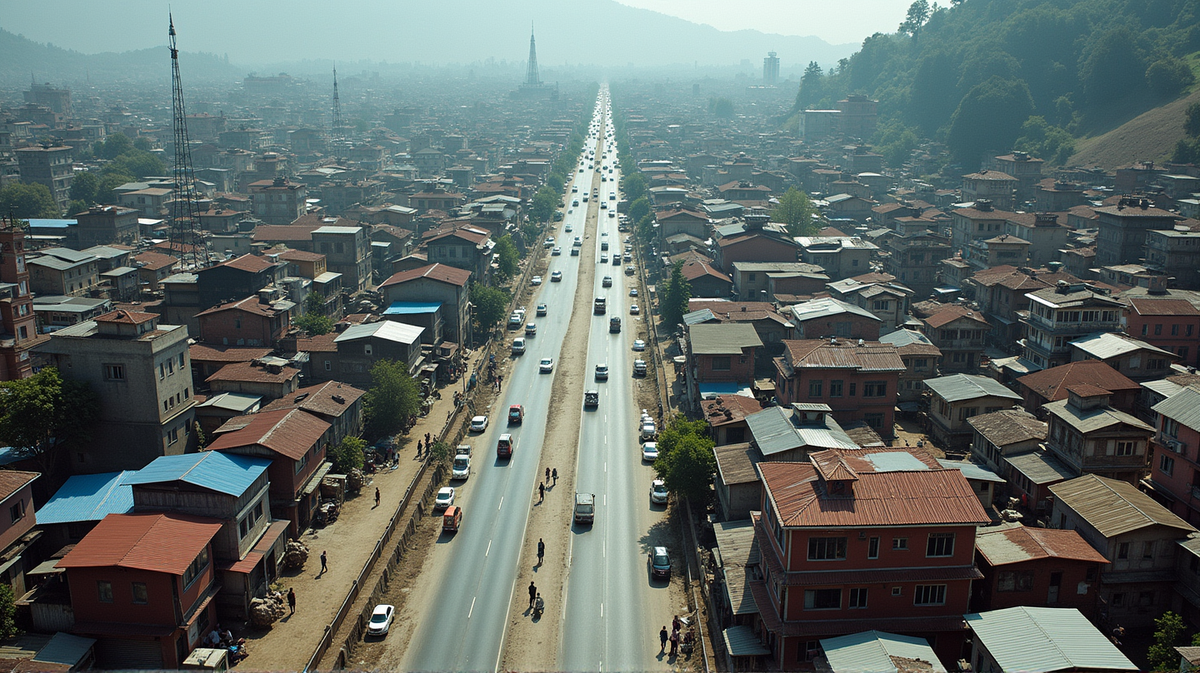Nepal's Economic Kaleidoscope: Navigating Challenges and Opportunities
In the vibrant economic landscape of Nepal, challenges meet opportunities. From financial policies to infrastructural ambitions, discover key trends shaping the future.

In the vibrant panorama of Nepal’s economy, the blend of cautious optimism and structural conundrums presents a compelling narrative. The recent fluctuations in the NEPSE index, the soaring gold prices, and stringent liquidity measures by Nepal Rastra Bank paint a picture of an economy in a delicate balancing act. With Rs 40 billion intended to be extracted from the banking system, financial strategies appear to be gravitating towards tighter monetary controls.
A Glimpse into Monetary Movements
The NEPSE index witnessed a downturn after its temporary ascent, illustrating investor trepidation amidst a landscape of fiscal recalibration. Gold has become a haven, its prices climbing incrementally, reflecting a populace seeking refuge from economic volatility. As stated in Khabarhub, these financial dynamics are a testament to an ever-evolving marketplace in Nepal.
Inflation and Market Competitiveness
Inflation hitting a 51-month low at 2.77% provides a breath of relief for consumers, juxtaposed against increased fiscal pressures, including the Rs 300 billion earmarked for salaries and pensions. SEBON’s feasibility report on a secondary stock exchange has rejuvenated dialogue about competitiveness and efficiency within Nepal’s capital markets.
Infrastructure Inception: Progress and Promises
Ambitious infrastructural projects like the Gwarko flyover and the Mirchaiya–Katari–Ghurmi road herald significant advancements, though rain-induced delays underscore challenges. Meanwhile, Nepal’s hydropower landscape, affected by water level variations at Kulekhani, stirs dialogues about future energy sustainability.
Evolving Trade and Transport Tides
The surge in EV imports through Rasuwagadhi signifies an increasing alignment with global green initiatives, albeit marred by custom hurdles. Collaborative labor agreements, such as the pact with Saudi Arabia, and initiatives in tourism around the Trishuli River, resonate as vital contributors to economic vibrancy.
The Road Ahead: Opportunities and Challenges
Despite infrastructural ambitions and positive market movements, challenges persist, notably in capital budget execution in provinces like Karnali. Upcoming fiscal plans by Bagmati Province reiterate the focus on production innovation, emphasizing agriculture, tourism, and environmental priorities. In business dynamics, the suspension of 2,200 VAT-registered firms in Nepalgunj signifies a rigorous adherence to fiscal compliance.
Navigating Nepal’s economic waters demands a confluence of creative policy-making, sustainable project execution, and adaptive market strategies, fostering a landscape ripe with opportunities amidst inherent challenges.